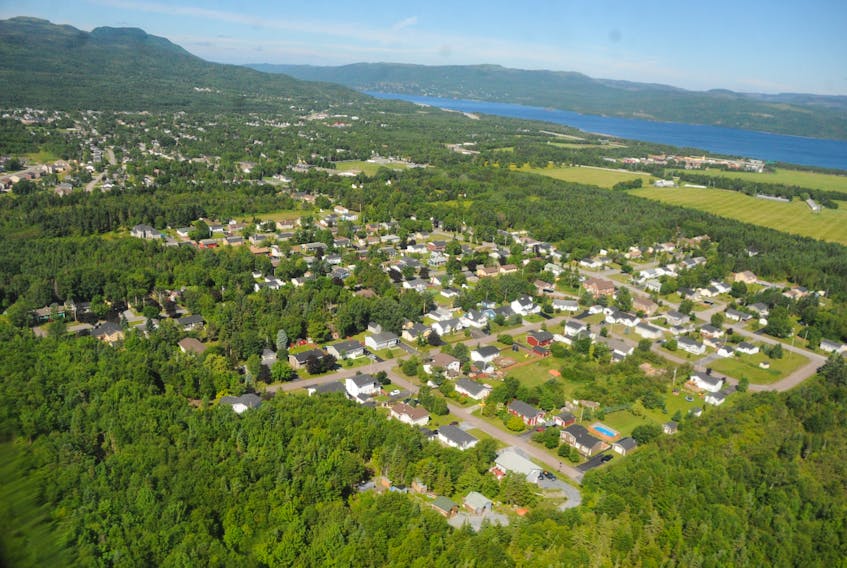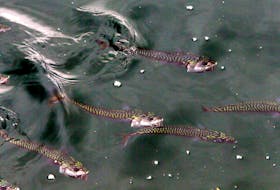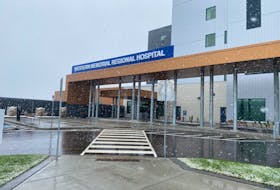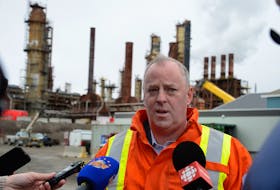PASADENA, N.L. — Mayor Gary Bishop says Pasadena has no intentions of letting a new report on the town’s water quality swirl down the drain without action being taken.
Last fall, the town began pursuing ways it could address the issue of high levels of trihalomethanes in its drinking water.
Trihalomethanes are byproducts created through the chemical reaction of chlorine and organic materials naturally found in surface water supplies. Long-term exposure to high levels of these byproducts have been linked to cancer and other health problems, though they pose no immediate threat to human health.
Regular testing conducted on municipal water supplies by the provincial government indicated last year that Pasadena was the largest community in Newfoundland and Labrador where THM levels exceed the acceptable standards determined by Health Canada.
The town committed to lowering those levels and hired a consultant to do a water quality report that included options to lower THM levels.
The town made that report public last week.
The bottom line is there is no quick fix and there aren’t any cheap solutions either.

The consultant, Wood Environment and Infrastructure Solutions, recommended the town go with a nanofiltration system, even though that is not the least expensive option.
According to Wood, the cost to install and to maintain a nanofiltration system — which essentially filters out more organic material from water prior to the chlorination process — for 25 years would be around $4.9 million.
That’s about $2.1 million more than the cheapest solution, using a stabilized hydrogen peroxide system instead of chlorine to disinfect water.
The significantly higher cost of a third option, which would use carbon filtration, was not recommended at all.
The main difference in the cost of the two more affordable options is the up-front capital costs to install the systems. The consultant said the annual operating costs of both systems would not be all that different.
The reason nanofiltration was deemed a better option was a concern expressed by the consultant about the long-term availability and cost of a dedicated supply of stabilized hydrogen peroxide.
Bishop said the town may pursue the consultant’s recommendation of nanofiltration, but won’t be making any decision until it hears from residents.
“We’re probably the only town that has tackled the THM issue,” said Bishop. “We’ve decided as a council there is an issue here and we’ve decided we’re going to tackle the issue head-on. We’ve released this report to the public so they can digest and we hope to get some feedback from them.”
The town hasn’t set up any formal mechanism for people to provide input on the report, but Bishop said the town is open to receiving comments from anyone through the regular channels they would communicate with town staff or council on any issue.
Either option would involve money the town does not have in its current budget, acknowledged Bishop.
The town will be approaching other levels of government for assistance, knowing the provincial government isn’t exactly flushed with cash and there are many other communities with excessive THM levels.
He hopes the fact Pasadena is taking significant steps to address its own issue with water quality will be recognized with funding help to accomplish its objective.
“Our concern is not the other municipalities,” said the mayor. “Our concern is our own municipality and we want to make sure we have good quality water for our residents.
“We didn’t spend $50,000 on this report just to find out what the options are. We spent $50,000 to find out how we’re going to correct the problem.”
Pursuing either option, even with some provincial or federal help, still means the town will have to find some of its own money to contribute.
Bishop said raising taxes or cutting services are not palatable options and hopes continued growth of the town’s tax base will help offset the costs.
“We don’t want to do another tax increase, if at all possible, because we had a significant increase in taxes last year,” said Bishop. “But, we have to realize our source of income is mainly taxes.”
THE OPTIONS
Nanofiltration
- The technology: uses a porous membrane to filter out organic material before water reaches the stage of interacting with chlorine and creating THMs.
- Effectiveness at reducing THM levels: has the potential to reduce disinfection byproducts up to 90 per cent. This process would allow THM guidelines to be met.
- Estimated capital costs: $1,690,150
- Estimated annual costs: $196,000
- Estimated 25-year costs: $4.9 million
- Pros: a small footprint, lower capital and operation and maintenance costs, and the confirmed ability to meet water quality requirements.
- Cons: additional training will be required to run the system and disposal of the concentrate will require additional environmental considerations and infrastructure.
Carbon filtration
- The technology: uses granular activated carbon, a porous material made from wood, lignite and coal suitable for filtration or absorption of organic materials prior to chlorination.
- Effectiveness at reducing THM levels: this process would have no problem meeting required THM limits. Granular activated carbon can significantly reduce disinfection byproduct levels.
- Estimated capital costs: $2,759,175
- Estimated annual costs: $500,000
- Estimated 25-year costs: $12.5 million
- Pros: confirmed ability to meet the guidelines and no significant environmental concerns, as well as low operator involvement and improved water quality parameters such as turbidity, colour and taste.
- Cons: high capital costs, high operation and maintenance costs, and a larger building addition would be required than other options
Hydrogen peroxide
- The technology: uses stabilized hydrogen peroxide to disinfect water, eliminating the need for chlorine altogether
- Effectiveness at reducing THM levels: This process will meet the required THM limits. Changing to this disinfectant along with some type of filtration can reduce disinfection byproducts by as much as 80 per cent.
- Estimated capital costs: $200,200
- Estimated annual costs: $120,000
- Estimated 25-year costs: $2.8 million
- Pros: low capital costs and the ability to eliminate disinfection byproducts
- Cons: operating and maintenance costs, environmental concerns, the potential need for a larger building footprint and concerns about a continuous and affordable supply of stabilized hydrogen peroxide for the long term.
Source: Water System Study, Town of Pasadena, NL









